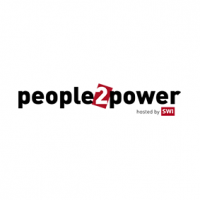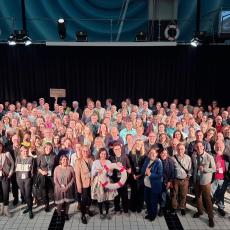When students take three days off work and class to head to the bright sunshine of the California coast, you might not expect them to dedicate their time to an experiment in participatory democracy. But that was exactly what you would have seen if you made your way to the top of Pepperdine University´s Malibu campus in early March, reports Ashley Trim.
The students had gathered to demonstrate how a Citizens´ Initiative Review process could make the California direct initiative more transparent, more understandable, and more independent of campaign spending. California was an early adopter of populist reforms to redress corruption and intractable partisan control through increased democracy in the early days of the 20th century. California remains the most active state in the Union when it comes to the initiative process. However, the second half of that century and the first decades of the 21st century have shown that institutions like the initiative and referendum can themselves become subject to partisan politics.
Between the notoriously murky language of initiatives and increasingly high-stakes campaigns around ballot measures, many voters find genuine deliberation and conversation around state measures all but impossible. A MapLight.org analysis of campaign spending on the 17 statewide initiatives on California´s November 2016 ballot revealed that four of those measures received more than 75% of their funding from individuals and groups outside of California. This torrent of campaign spending, combined with often confusing wording in ballot measures make initiative reform a perennial issue in California.
Yet little has been accomplished in this area. In a state where only 41% of likely voters approve of how the legislature is doing (a frankly impressive improvement from the 10% approval ratings the legislature was polling in 2010 and 2011), it is perhaps unsurprising that two-thirds are satisfied with the initiative process.California remains unlikely to overhaul its initiative process. But that does not mean it can´t be improved.
The Proposed Solution
The Citizens´ Initiative Review (CIR) is an innovative way of publicly evaluating ballot measures so voters have clear, useful, and trustworthy information. During a CIR a small panel of demographically-balanced voters is brought together from across the state to hear from advocates and experts and deliberate together to evaluate a ballot measure. The panel size is not designed to be a representative sample of the population. Rather it is determined by the objective of deliberation though participants are selected to reflect the voting population. Their goal is not to endorse a position on any given initiative. Rather they work together across demographics and party lines to draft a Citizens’ Statement outlining the most important facts about the ballot measure and identifying the strongest arguments for and against the measure.
It is, if you will, a way to "cut the crap" of fake news and campaign-finance driven rhetoric - to dig down to the facts and arguments that both sides should be able to agree on. The CIR has been used in Oregon, Arizona, Colorado and Massachusetts. It has not yet been undertaken in California.
The Experiment
Given the political challenges described above, and the sheer size of the state of California, it has proved challenging to generate the political will to experiment with a process like the Citizens´ Initiative Review. In the face of this challenge, the Davenport Institute for Public Engagement and Civic Leadership and Oregon-based non-profit Healthy Democracy decided this was an opportunity to show rather than tell. Healthy Democracy has facilitated the CIR in the other states that have adopted the process. The Davenport Institute had connections to California policy makers, academics and - key to this project - students.
For the purposes of the demonstration, the citizen panel was comprised of a group of students from undergrad and graduate schools from across California. It was diverse in terms of politics, gender, and ethnicity. Because the event fell between election cycles, the demonstration explored one of the 17 statewide measures from the November 2016 budget - Proposition61: Drug Pricing Limits. Prop 61 was perhaps the most complicated of the 2016 ballot measures. It generated the highest campaign spending, and the most out-of-state spending. The final vote was close; the measure failed by only 7%.
To better accommodate student schedules, the demonstration was cut down to three days rather than four. Students reviewed written information from the pro- and con- campaigns, rather than hearing from the campaigns in panel discussions. The final statement was abbreviated (three, rather than five arguments identified for and against the measure, and text left as bullet points instead of written into a full narrative). Even with these limitations, the demonstration told a powerful story about the value of citizen deliberation in democracy. Of course the formal product was the citizen statement, available online.
Civic education
States that have implemented the full CIR process include panelist statements with ballot information to provide an overview that offers a multi-partisan perspective on the meaning of an initiative as well as a consensus about which arguments for and against the measure are most valid and compelling.
Less tangible, but perhaps even more valuable, were the responses of the panelists. Several students noted that only after the deliberation did they realize how poorly informed their vote had been in November (often despite their best efforts). "This demonstrates how important it is for voters to be educated before we go to the polls", said Michael, an undergrad from California State University Channel Islands, "This program needs to be implemented in California."
Dulce, a student at California State University Dominguez Hills, noted the diversity of the panel and the civility of the dialogue. "We all came to this with different experiences and viewpoints that informed the questions we asked and the concerns we raised", she said, "It was a unique experience to see how our diverse experiences shaped the collaborative product." The demonstration has already generated interest in local CIR projects from several California counties Healthy Democracy and the Davenport Institute hope this momentum will pave the way for a full-length California pilot in 2018.
Ashley Trim is the Executive Director of the Davenport Institute for Public Engagement and Civic Leadership at the Pepperdine University School of Public Policy. She writes and speaks about transparency and public engagement for local and online publications, Davenport Institute trainings, and national conferences. Ashley oversees the Institute´s annual public engagement grant program and coordinates trainings, conferences, and partnership projects for the Institute.




